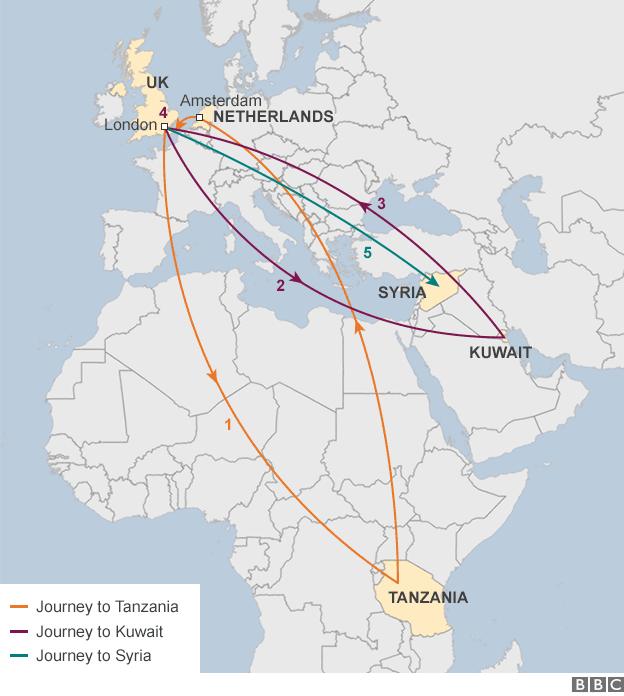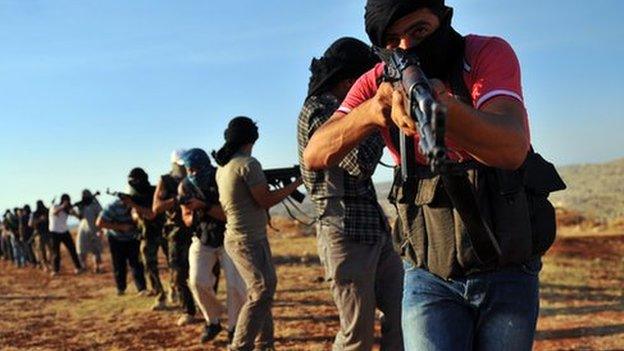'Jihadi John' movements mapped
- Published
The masked Islamic State militant known as "Jihadi John" has been named as Mohammed Emwazi - a Kuwaiti-born British man in his mid-20s.
Emwazi, from west London, made a number of journeys abroad before heading to Syria in 2013, according to London-based human rights group Cage., external
He came into contact with security services on those travels, the organisation said, beginning with a trip to Tanzania in August 2009 - just after graduating from the University of Westminster.

Mohammed Emwazi's movements before heading to Syria

1. Aug 2009, refused entry to Tanzania: Emwazi travels to Tanzania with two friends for a Safari holiday. After being refused entry, they are put on a plane to Schipol, Amsterdam, where they are questioned. They then return to Dover, where they are questioned again by anti-terror officers.
2. Sept 2009, travels to Kuwait for work: Emwazi leaves the UK for Kuwait for work.
3. May/June 2010, returns to UK for holiday: in May 2010, after eight months, he returns to the UK for an eight-day visit.
4. July 2010, refused re-entry to Kuwait: after two more months in Kuwait, Emwazi decides to return home once more for a couple of days. He is stopped at Heathrow on his return to Kuwait and told he cannot travel there as his visa has expired.
5. 2013, travels to Syria: Emwazi changes his name to Mohammed al-Ayan and attempts to travel to Kuwait one last time but is prevented and questioned. Three days later, he leaves his parents' home to travel abroad. Police later inform his family he has travelled to Syria.

Emwazi first appeared in an Islamic State video last August, when he apparently killed the US journalist James Foley.
He was later thought to have been pictured in the videos of the beheadings of US journalist Steven Sotloff, British aid worker David Haines, British taxi driver Alan Henning, and American aid worker Abdul-Rahman Kassig, also known as Peter.
- Published26 February 2015

- Published13 November 2015
- Published26 February 2015
